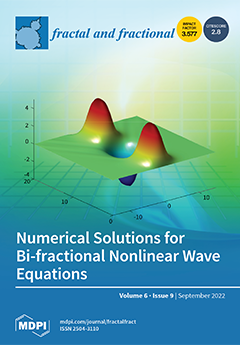The impulsive response of the fractional vibration equation
,
, is investigated by using the complex path-integral formula of the inverse Laplace transform. Similar to the integer-order case, the roots of the characteristic equation
must be considered. It is proved that for any
,
and
, the characteristic equation always has a pair of conjugated simple complex roots with a negative real part on the principal Riemann surface. Particular attention is paid to the problem as to how the couple conjugated complex roots approach the two roots of the integer case
, especially to the two different real roots in the case of
. On the upper-half complex plane, the root
is investigated as a function of order
and with parameters
b and
c, and so are the argument
, modulus
, real part
and imaginary part
of the root
. For the three cases of the discriminant
:
,
and
, variations of the argument and modulus of the roots according to
are clarified, and the trajectories of the roots are simulated. For the case of
, the trajectories of the roots are further clarified according to the change rates of the argument, real part and imaginary part of root
at
. The solution components, i.e., the residue contribution and the Hankel integral contribution to the impulsive response, are distinguished for the three cases of the discriminant.
Full article





